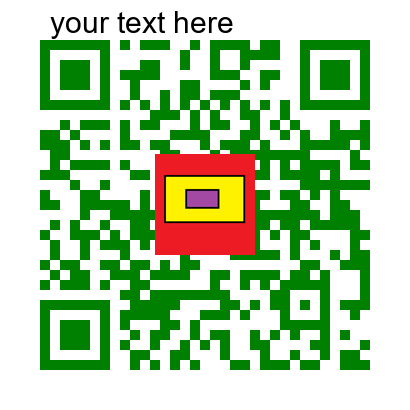How to Create QR Codes with Python
English at the end!
Guia para Iniciantes
Se você já quis gerar códigos QR para seus projetos ou negócios, está com sorte! Neste guia, vamos te guiar pelo processo de criação de códigos QR usando Python e o pacote qr-code. Não se preocupe se você é novo no Python ou programação - explicaremos tudo passo a passo. Você pode encontrar todo esse material no meu repositório.
O Que Você Vai Precisar
Antes de começarmos, certifique-se de ter o seguinte:
- Python: Garanta que o Python esteja instalado em seu computador. Você pode baixá-lo no site oficial do Python.
- Ambiente Virtual: Vamos usar um ambiente virtual para gerenciar as dependências do nosso projeto. Se você não está familiarizado com ambientes virtuais, não se preocupe - vamos guiá-lo pelo processo de configuração.
Configurando o Ambiente Virtual
- Criar um Ambiente Virtual: Abra sua interface de linha de comando (CLI) e navegue até o diretório do seu projeto. Em seguida, execute o seguinte comando para criar um ambiente virtual chamado .venv:
python -m venv .venvSe você preferir um nome de ambiente diferente, pode substituir.venvpelo nome desejado - Ativar o Ambiente Virtual: Uma vez que o ambiente virtual é criado, ative-o executando o comando apropriado para o seu sistema operacional Windows:
.venv\Scripts\activateUnix/Linux/MacOS:source .venv/bin/activate - Instalar Pacotes Necessários: Com o ambiente virtual ativado, instale os pacotes qrcode e pillow usando o pip:
pip install qrcodepip install pillow
Gerando Códigos QR
Agora que tudo está configurado, vamos gerar alguns códigos QR!
- Geração de Código QR Geral: Você pode personalizar as cores e adicionar texto (como um título) ao código QR. Confira o Notebook com o código para QR-code de links e textos em gerais para mais detalhes.

- Cartão de Visita Virtual (Vcard): Compartilhe suas informações de contato usando um código QR. Use o Notebook com o código para QR-code de Cartão de Visita para criar seu código QR personalizado.

Sinta-se à vontade para explorar e modificar o código conforme suas necessidades! Você também pode clonar meu repositório de qrcode.
Eu também criei um projeto na GCP (Google Cloud Computing), confira nesse link, ou no fim da página.
Este post tem como objetivo tornar o processo de criação de códigos QR acessível a todos, independentemente de sua experiência em programação. Boa codificação!
Português no começo!
A Beginner’s Guide
If you’ve ever wanted to generate QR codes for your projects or business, you’re in luck! In this guide, we’ll walk you through the process of creating QR codes using Python and the qr-code package. Don’t worry if you’re new to Python or programming – we’ll explain everything step by step. You can find all this material at my repository.
What You’ll Need
Before we get started, make sure you have the following:
- Python: Ensure Python is installed on your computer. You can download it from the official Python website.
- Virtual Environment: We’ll be using a virtual environment to manage our project dependencies. If you’re not familiar with virtual environments, don’t worry – we’ll guide you through the setup process.
Setting Up the Virtual Environment
- Create a Virtual Environment: Open your command line interface (CLI) and navigate to your project directory. Then, run the following command to create a virtual environment named .venv:
python -m venv .venvIf you prefer a different environment name, you can replace.venvwith your desired name. - Activate the Virtual Environment: Once the virtual environment is created, activate it by running the appropriate command for your operating system: Windows:
.venv\Scripts\activateUnix/Linux/MacOS:source .venv/bin/activate - Install Required Packages: With the virtual environment activated, install the qrcode and pillow packages using pip:
pip install qrcodepip install pillow
Generating QR Codes
Now that we have everything set up, let’s generate some QR codes!
- General QR Code Generation: You can customize the colors and add text (such as a title) to the QR code. Check out the General QR Code Notebook for a detailed guide.

- Virtual Business Card (Vcard): Share your contact information using a QR code. Use the Business Card QR Code Notebook to create your personalized QR code.

Feel free to explore and modify the code to suit your needs! You can also clone my qrcode repositoy.
I also created a GCP (Google Cloud Computing) project that you can check out in this link, or below.
This post aims to make the process of creating QR codes accessible to everyone, regardless of their programming experience. Happy coding!
Enjoy Reading This Article?
Here are some more articles you might like to read next: